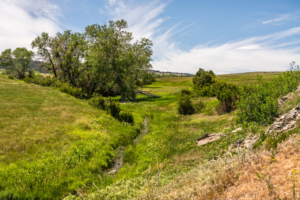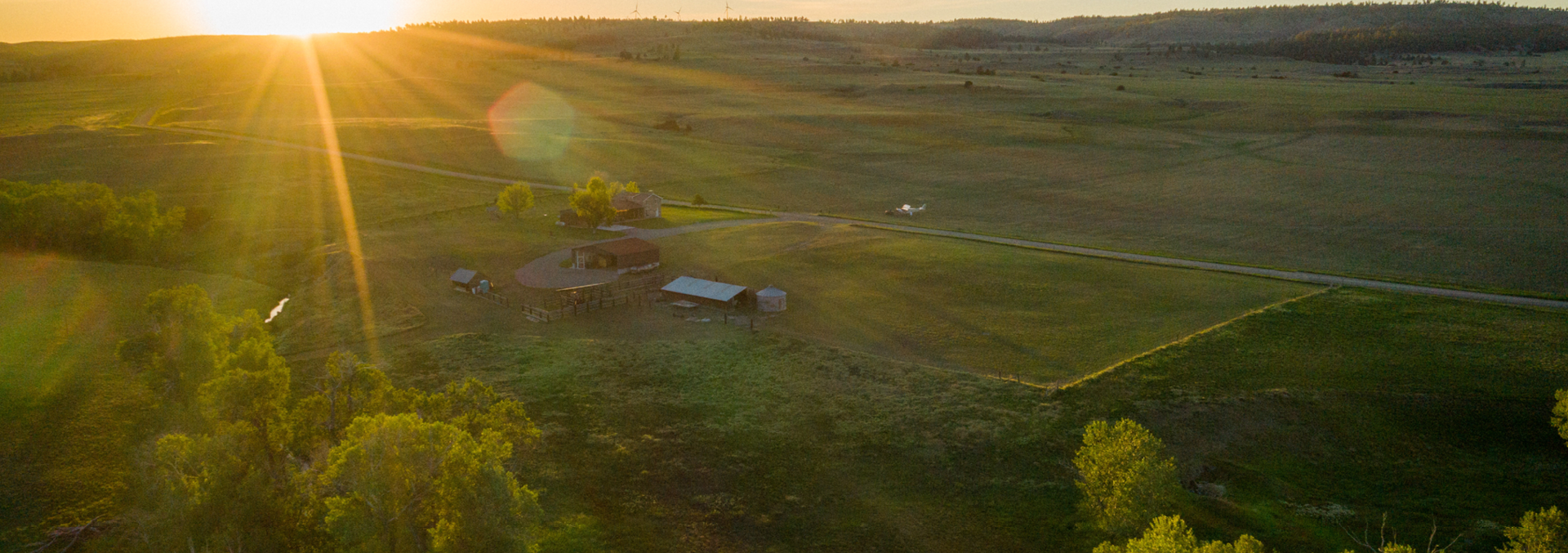A Tribute to Montana History Built on Sustainable Water
By Vinny Delgado, Ranch Sales, Licensed in MT
Throughout history, water has always been the lifeline to survival in the west. Stonehouse Ranch in Reed Point, Montana, was and still is no exception. There is no question the founders of its remarkable resting point picked its spot because of the nearby high-production springs that are as reliable today as they were in the 1800s. This rare piece of history sits between Big Timber and Columbus, Montana, just 30± minutes from each. With dates carved in stone (literally), this remarkable treasure dates back to 1872. The “halfway house” welcomed weary travelers on the Bozeman-Miles City stage line. As evidenced in the original abstract, a formal transfer to its first private owner was signed by President Grover Cleveland in 1886.
Learn more about Why the History of Water is Important when Investing in a Ranch, written by John Anderson of Fay Ranches.
There are two main types of water right systems actively used in the United States today: the Riparian system and the Law of Prior Appropriations. Many eastern states utilize the Riparian water rights system, which states that an owner whose property abuts a waterway has an inherent right to use that water in allocated amounts. Western state property owners don’t have that fundamental right and must establish a water right to utilize any water. Residential users are generally exempt and can use water for domestic purposes.
The history of western water rights is surprisingly colorful and exciting. John Wesley Powell, born in New York in 1834, enlisted in the Union Army in 1861. He served and fought in the Civil War and was eventually promoted to a rank of major. After the Civil War, American society was eager to assert itself on the world stage. People from all societal levels envisioned a nation that extended from sea to shining sea. Rumors of mystical beasts, substantial gold deposits, and fertile soil were rampant in everyday conversations. These daily conversations eventually became a movement with a name: Manifest Destiny. The majority of Americans believed that it was the destiny of the nation to expand all the way to the Pacific Ocean, and a vast political movement focused on making this happen. In 1869, Congress sent John Wesley Powell and his expedition to map and inventory the natural resources available in the western part of North America. Powell and his comrades became legends, as they were the first Europeans to build rafts and float the Colorado River. Imagine taking on a rogue river in the middle of the wilderness with no prior knowledge of it. Those men showed uncommon grit and the will to survive in unimaginably challenging conditions.
John Wesley Powell became an acclaimed scientist and provided Congress with a detailed assessment of the natural resources of western North America. The report highlighted the lack of water for establishing large settlements and outlined recommendations on how to deal with the arid landscape. One of the primary suggestions was that the United States government should own all water rights. Powell was so concerned about the lack of water that he suggested the boundaries of any new western state be based upon geographical watersheds. History tells us that Congress listened to some of his recommendations, but political pressure wouldn’t allow a methodical approach to western settlement. The law of Riparian water rights, if enforced, would be a complete disaster, so there had to be a better way.
Benchmark court cases can give birth to new rulings when there is a loophole in the law or no legal precedent, which is what occurred in 1855 when the California Supreme Court listened to arguments in Irwin v. Phillips. The case, in a nutshell, is as follows: Matthew Irwin diverted a stream for the benefit of his mining operation. Later, Robert Phillips started a mining operation further downstream from Irwin. Phillips wanted more water and tried to divert the stream back to its original streambed course. An intense argument ensued. The court found that Irwin was the first person to use the water for beneficial use and therefore had priority over future users. Courts across the western landscape began basing their decisions on the logic employed in the California Supreme Court ruling, and the Law of Prior Appropriations was born.
The law is fundamental and reflects the no-nonsense demeanor of the western frontier. Four elements comprise the Law of Prior Appropriations: intent, diversion, beneficial use, and priority. Essentially, first-in-time, first-in-use established a priority over all future users.
To this day, the California Supreme Court decision continues to impact water rights disputes throughout the western United States. Although the cases are much more complicated compared to the Irwin v. Phillips case, the basic legal concepts are still in play.
Ranch brokers are knowledgeable regarding water right issues in their communities, but it is always the best policy to hire an expert. Water rights experts professionally research water rights, frequently testify in court, have a grasp of the current political trends, and are knowledgeable about issues that may affect your water rights in the future. These experts are essential to any real estate investment involving water rights. Their reports typically provide an outline of your water rights history, points of diversion, delivery and potential non-compliant issues, and they can be critical in helping you maximize your land investment.
 More about Stonehouse Ranch
More about Stonehouse Ranch
Stonehouse Ranch has been preserved and was transformed in 2012 with a contemporary addition that joins the south wall of the original “Stage Stop” to provide unobstructed views of the White Beaver Valley. As you drive through Stonehouse Ranch, stunning views of the Absaroka Mountains rise dramatically to the south and provide one of the most impressive mountain vistas in the state. This 400± acre ranch is in one of Montana’s most beautiful, recreationally diverse, and highly sought-after areas and is comprised of beautiful rolling pastures, covered draws, incredible mountain views, and two high-producing springs. Just 10± minutes north of small-town Reed Point, Montana, and 30± minutes west of Columbus, Montana, this property is the perfect mix of an agriculturally rich environment, excellent year-round access, and an incredible amount of wildlife, from elk to upland birds.






